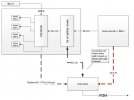I have some Shure SE535's I want to start using at rehearsal. I had tried these and gigged with them a few times pre-covid but I kind of fell out of love with them since the sound for lead guitar just isn't quite the same as what you get from your monitor. And I know it's never really going to be the same because it's just a different dynamic. But I never tried EQ'ing my IEM mix and I want to give that a shot. If I connect my FM3 to FOH, my monitor and IEM set, would I still be using the Global Output 2 EQ to EQ my in ears? And Im talking specifically for my guitar sound. Or is there another way to EQ your In Ear mix? Probably something in the mixer software right? The EQ would have to be independent of the FOH sound for sure. Hope to learn some new things from this.

